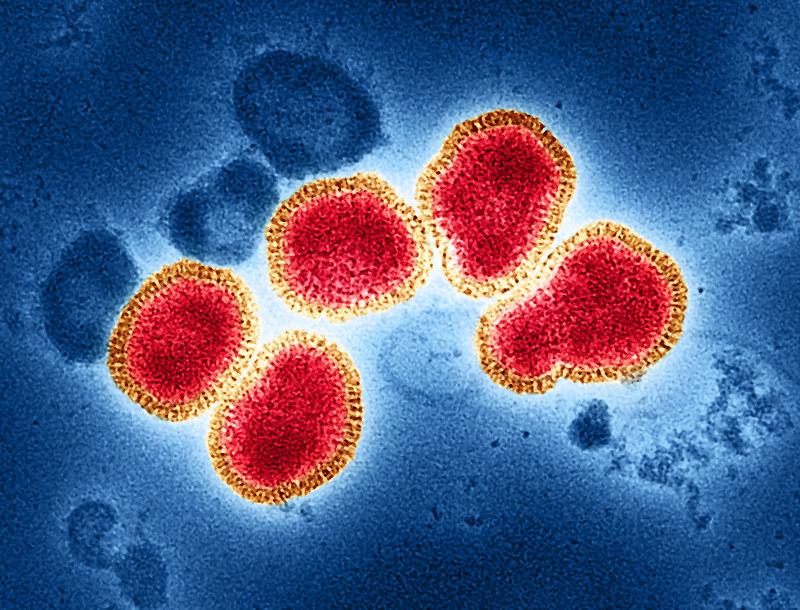Earlier this month, a group of Canadian researchers published early influenza data for the 2025-26 season, issuing a warning: There has been an observed mismatch with the seasonal influenza vaccine strain and what is emerging as the dominant flu strain this season, H3N2 subclade K.
Based on early reports from Japan and the United Kingdom, the Canadian researchers wanted to publish these data to encourage enhanced surveillance in North America this season, especially given the tumultuous situation in the United States.
This is not the time to be flying blind into the respiratory virus season.
"This is not the time to be flying blind into the respiratory virus season," Danuta Skowronski, MD, the epidemiology lead for influenza and emerging respiratory pathogens at the British Columbia Centre for Disease Control, told CIDRAP News. Skowronski was senior author of the paper, which was published in the Journal of the Association of Medical Microbiology and Infectious Disease Canada.
"We look to the US to see what is circulating, because it drives what's going on in North America," she said.
H3N2 shows early dominance in UK, Japan
The US Centers for Disease Control (CDC) has not posted the standard weekly respiratory illness surveillance data since September 26, and it is unknown when or if national surveillance in the country will resume.
Skowronski and her colleagues said sequencing information gleaned from the Northern Hemisphere 2024-25 influenza season showed influenza A mutations among emerging Northern Hemisphere and Southern Hemisphere H3N2 variants relative to the 2024-25 subclade J and updated 2025-26 subclade J.2 vaccine reference strains, which were used to formulate the current vaccine. H3N2 and H1N1 are both influenza A strains.
"This subclade K emerged at the tail end of Southern Hemisphere's season after the WHO [World Health Organization] made the choice of the strain, which is subclass J2," she said.
H1N1 predominated the flu season this year in the Southern Hemisphere, with the H3N2 subclade K taking off only at the end. But early data from the United Kingdom and Japan show that the H3N2 subclade K was represented in 90% of flu samples.
A drift, not a shift
It's too early to tell what this will mean for the United States, but Skowronski said she and her colleagues do not believe this strain of H3N2 will lead to a pandemic.
"This is a major drift, not a shift," she said. "This is the same subtype we have had circulating in human population since 1968. But each season, the virus evolves to evade immunity, and some seasons it's relatively more successful than other seasons."
She also said she was encouraged, because the mutation sites would not affect how well antiviral drugs work, and the mutations are not associated with increased virulence or severity.
But if vaccine efficacy is significantly reduced, more flu cases should be expected, and surveillance is crucial to determine how much protection flu vaccines are offering.
Surveillance needed
Joshua Petrie, PhD, MPH, associate research scientist at Wisconsin's Marshfield Clinic Research Institute, Center for Clinical Epidemiology and Population Health, said he's not seeing a lot of influenza activity — yet. The flu he and his colleagues have seen is primarily H1N1, but he expects H3N2 will be the dominant strain this year.
He said most states will collect surveillance data throughout the season, but there's uncertainty given the lack of national surveillance provided by the CDC.
The influenza season can take off quickly, and it might sneak up on us you if we you aren't watching what is happening nationally.
"The influenza season can take off quickly, and it might sneak up on us you if we you aren't watching what is happening nationally," he said. "CDC also performs the more advanced characterization of circulating influenza viruses in terms of their genetics and how they interact with our existing immunity. These data are used to select viruses that will be represented in next year's vaccine."
For now the experts have to wait. Skowronski said it could be that influenza B dominates instead of H3N2, though that's unlikely. In general, said Petrie, H3N2-dominant seasons pack a bigger punch, with lower effectiveness of the vaccine and more severe illness in older adults than in H1N1-dominant years.
Petrie said getting the flu vaccine is still important, even if there is a significant mismatch. "Even in seasons when vaccine effectiveness is lower, the vaccine still provides some protection and is the best thing you can do to reduce your risk of severe illness," he said.
UK preprint shows encouraging signs
Today preprint data from the UK Health Security Agency on early influenza virus characterization and vaccine effectiveness (VE) suggest that the 2025-26 vaccine is currently 70% to 75% effective at preventing hospital attendance in children aged 2 to 17 years, and 30% to 40% effective in adults.
"The observed early VE is similar to end of season VE estimates typically seen in adults in recent years in the UK, Europe, and Canada," the authors wrote. "Our results are encouraging, though it is important to note that these observations are from a period very soon after vaccination when there has been no waning in effectiveness."
The strong protection, especially among children, is encouraging after the UK authors described reduced reactivity of subclade K with post-infection ferret antisera, and described an early and sharp rise in UK flu cases.
"Nevertheless, vaccine effectiveness against hospital attendance and admission in the early season currently remains within a typical range at 70 to 75% in children and 30 to 40% in adults," the authors added.



















